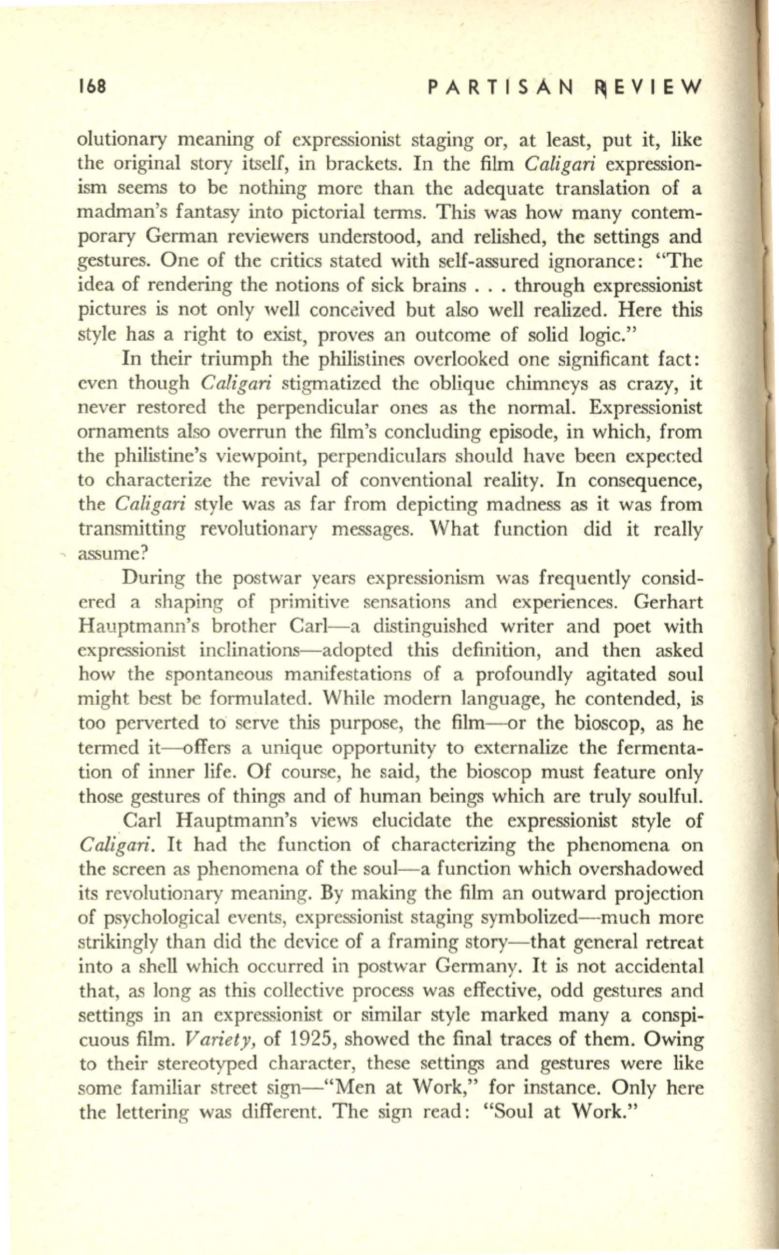
168
PARTISAN
~EVIEW
olutionary meaning of expressionist staging or, at least, put it, like
the original story itself, in brackets. In the film
Caligari
expression–
ism seems to be nothing more than the adequate translation of a
madman's fantasy into pictorial terms. This was how many contem–
porary German reviewers understood, and relished, the settings and
gestures. One of the critics stated with self-assured ignorance: "The
idea of rendering the notions of sick brains . . . through expressionist
pictures is not only well conceived but also well realized. Here this
style has a right to exist, proves an outcome of solid logic."
In their triumph the philistines overlooked one significant fact:
even though
Caligari
stigmatized the oblique chimneys as crazy, it
never restored the perpendicular ones as the normal. Expre-.ssionist
ornaments also overrun the film's concluding episode, in which, from
the philistine's viewpoint, perpendiculars should have been expected
to characterize the revival of conventional reality. In consequence,
the
Caligari
style was as far from depicting madness as it was from
transmitting revolutionary messages. What function did it really
, assume?
During the postwar years expressionism was frequently consid–
ered a shaping of primitive sensations and experiences. Gerhart
Hauptmann's brother Carl-a distinguished writer and poet with
expressionist inclinations-adopted this definition, and then asked
how the spontaneous manifestations of a profoundly agitated soul
might best be formulated. While modern language, he contended, is
too perverted to serve this purpose, the film-or the bioscop, as he
termed it-offers a unique opportunity to externalize the fermenta–
tion of inner life. Of course, he said, the bioscop must feature only
those gestures of things and of human beings which are truly soulful.
Carl Hauptmann's views elucidate the expressionist style of
Caligari.
It had the function of characterizing the phenomena on
the screen as phenomena of the soul-a function which overshadowed
its revolutionary meaning. By making the film an outward projection
of psychological events, expressionist staging symbolized-much more
strikingly than did the device of a framing story-that general retreat
into a shell which occurred in postwar Germany. It is not accidental
that, as long as this collective process was effective, odd gestures and
settings in an expressionist or similar style marked many a conspi–
cuous film.
Variety,
of 1925, showed the final traces of them. Owing
to their stereotyped character, these settings and gestures were like
some familiar street sign-"Men at Work," for instance. Only here
the lettering was different. The sign read: "Soul at Work."


